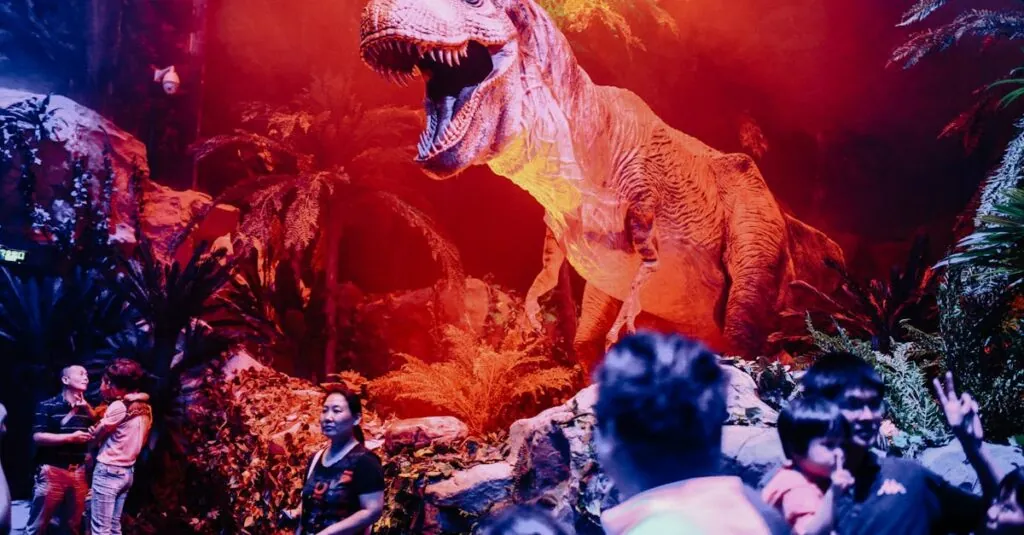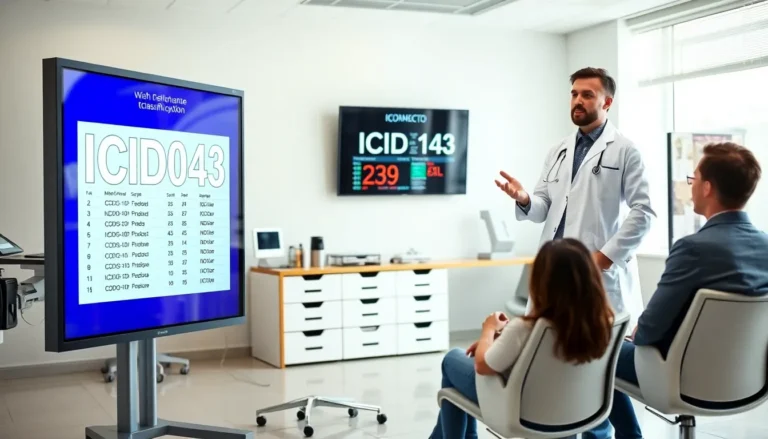Table of Contents
ToggleImagine stepping into a time machine, zipping past centuries of history with a click of a button. Interactive history education makes that dream a reality, transforming the way students engage with the past. Gone are the days of dull textbooks and monotonous lectures. With immersive experiences and hands-on activities, learning history becomes an adventure rather than a chore.
Overview of Interactive History Education
Interactive history education transforms how students engage with the past, emphasizing participation and experiential learning. This approach brings history to life, moving beyond passive learning to foster critical thinking and curiosity.
Definition and Importance
Interactive history education involves techniques that immerse students in historical contexts. This method promotes active engagement rather than passive reception of information. By allowing learners to explore history through simulations, role-playing, and projects, educators foster deeper understanding and retention. Engaging learners in this way cultivates critical skills such as analysis, collaboration, and empathy. Studies indicate that interactive methods can enhance knowledge retention by up to 50 percent compared to traditional lecture-based approaches.
Key Components
Several components define interactive history education. Integrating technology stands out as a crucial element, with tools like virtual reality and online resources enriching the learning experience. Project-based learning encourages students to investigate historical events actively, allowing for personal connections to the material. Hands-on activities, such as reenactments or local history explorations, also play a vital role in connecting students with their community’s past. Collaboration among peers fosters teamwork while allowing diverse perspectives to emerge, enhancing overall understanding. Each component synergizes to create a comprehensive educational experience, encouraging learners to develop a lifelong interest in history.
Benefits of Interactive History Education
Interactive history education offers numerous benefits that significantly enhance the learning process. Engaging students with immersive experiences promotes a deeper understanding of historical events and contexts.
Engaging Learning Experience
Interactive methods captivate students’ interest, making history come alive. Students actively participate in simulations, role-playing activities, or virtual reality experiences, fostering excitement for the subject. Immersive projects spark curiosity, encouraging learners to explore beyond the classroom. Collaboration with peers, through group activities, enhances social skills while creating a shared sense of discovery. These engaging experiences lead to better retention of historical knowledge compared to conventional methods. Studies indicate that students demonstrate increased motivation, leading to longer-lasting educational outcomes.
Enhancing Critical Thinking Skills
Engagement in interactive history education develops critical thinking skills. Students analyze historical events through discussions, debates, and hands-on projects, allowing them to form their own opinions. Evaluating differing perspectives fosters a deeper appreciation for historical complexities. Furthermore, students learn to ask questions, challenging assumptions to gain a comprehensive understanding of past events. Applying these skills in real-world contexts prepares students for future academic and professional pursuits. Research highlights a marked improvement in critical thinking capabilities among students involved in interactive learning.
Examples of Interactive History Education Approaches
Interactive history education encompasses various methods that enhance student learning and engagement. Here are some effective approaches:
Gamification in History Learning
Gamification transforms history lessons into engaging quests. Students participate in competitive activities that reinforce historical content through game mechanics. For instance, history trivia games or quest-based learning activities allow students to earn points and badges, motivating them to explore deeper. Additionally, these methods encourage teamwork as students collaborate to solve challenges together. Research shows gamification can boost retention rates, making learning more memorable and enjoyable.
Use of Technology and Multimedia
Technology integration in history education creates immersive experiences. Virtual tours of historical sites allow students to explore places they might not otherwise visit. Multimedia presentations, including videos and interactive infographics, capture students’ attention, presenting complex information clearly. Augmented reality apps provide hands-on exploration of artifacts, enhancing understanding through visual representation. Studies indicate that students using technology in their learning outperform traditional methods, demonstrating a more profound comprehension of historical concepts and events.
Challenges in Implementing Interactive History Education
Interactive history education faces several significant challenges that can hinder its effectiveness.
Accessibility Issues
Accessibility remains a primary concern for many educational institutions. Not all students have equal access to technology, which limits engagement with interactive platforms. Rural and underfunded schools often struggle with outdated equipment and insufficient resources. Furthermore, students with disabilities may require specialized tools to fully participate. When these factors are overlooked, schools might unintentionally alienate certain student groups, affecting overall engagement in historical learning experiences.
Curriculum Limitations
Curriculum limitations also pose a challenge for implementing interactive history education. Many existing programs emphasize traditional approaches, leaving little room for innovation. Educational frameworks often prioritize standardized test preparation over hands-on learning experiences. Teachers may feel constrained by rigid guidelines that do not allow for creative exploration of history. To effectively integrate interactive methods, curriculum designers must rethink existing frameworks, ensuring they align with modern educational standards while providing opportunities for experiential learning.
Future Trends in Interactive History Education
Emerging trends in interactive history education focus on the integration of new technologies and collaborative learning opportunities. These advancements aim to enhance student engagement and improve educational outcomes.
Emerging Technologies
Virtual reality, augmented reality, and artificial intelligence shape the future of interactive history education. Virtual reality immerses students in historical environments, allowing them to experience events first-hand. Augmented reality supplements traditional materials, providing interactive overlays that deepen understanding. Artificial intelligence personalizes learning experiences by adapting content to match individual student needs. These technologies, when integrated effectively, can lead to a 50 percent increase in knowledge retention compared to traditional methods. Schools and educators increasingly adopt these tools to promote active learning, making history accessible and relatable to all students.
Collaborative Learning Opportunities
Collaboration plays a crucial role in enhancing interactive history education. Group projects and peer discussions foster critical thinking and communication skills among students. Cooperative learning environments encourage students to share different perspectives on historical events. By working together, students develop a sense of community and collective inquiry. Teachers can implement project-based learning approaches to create real-world connections, guiding students to explore history collaboratively. Research indicates that students engaged in collaborative learning report higher motivation and improved retention rates. These opportunities ensure deeper engagement with historical content while empowering students to develop essential lifelong skills.
Interactive history education represents a significant leap forward in how students connect with the past. By embracing immersive techniques and technology, educators can transform history lessons into engaging experiences that foster critical thinking and collaboration. This approach not only captivates students’ interest but also enhances their understanding of historical complexities.
As the educational landscape continues to evolve, the integration of advanced technologies and innovative methods will further enrich interactive learning. Addressing challenges like accessibility and curriculum constraints is essential for maximizing the potential of these educational strategies. Ultimately, interactive history education cultivates a lifelong passion for learning and equips students with essential skills for their future.







